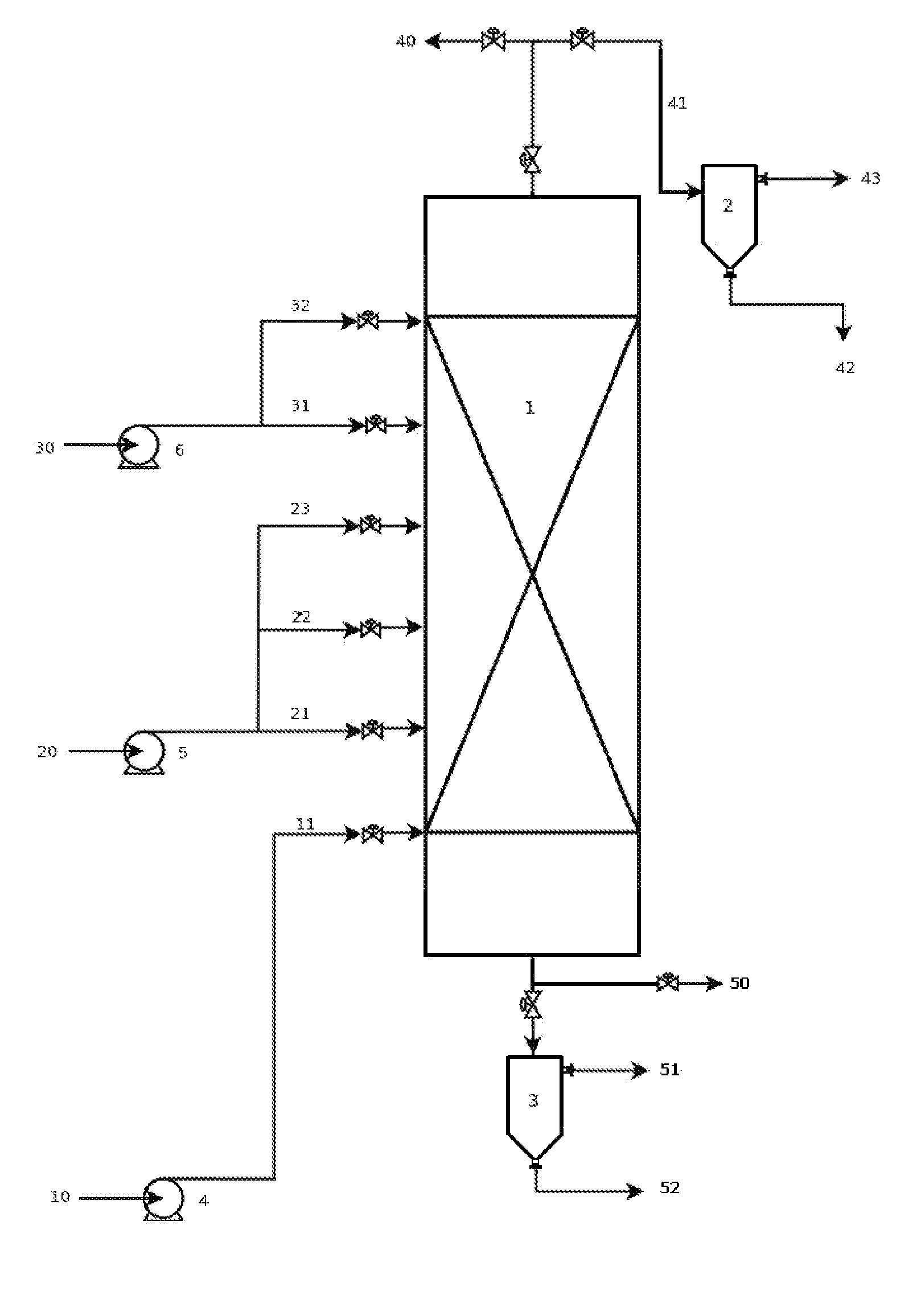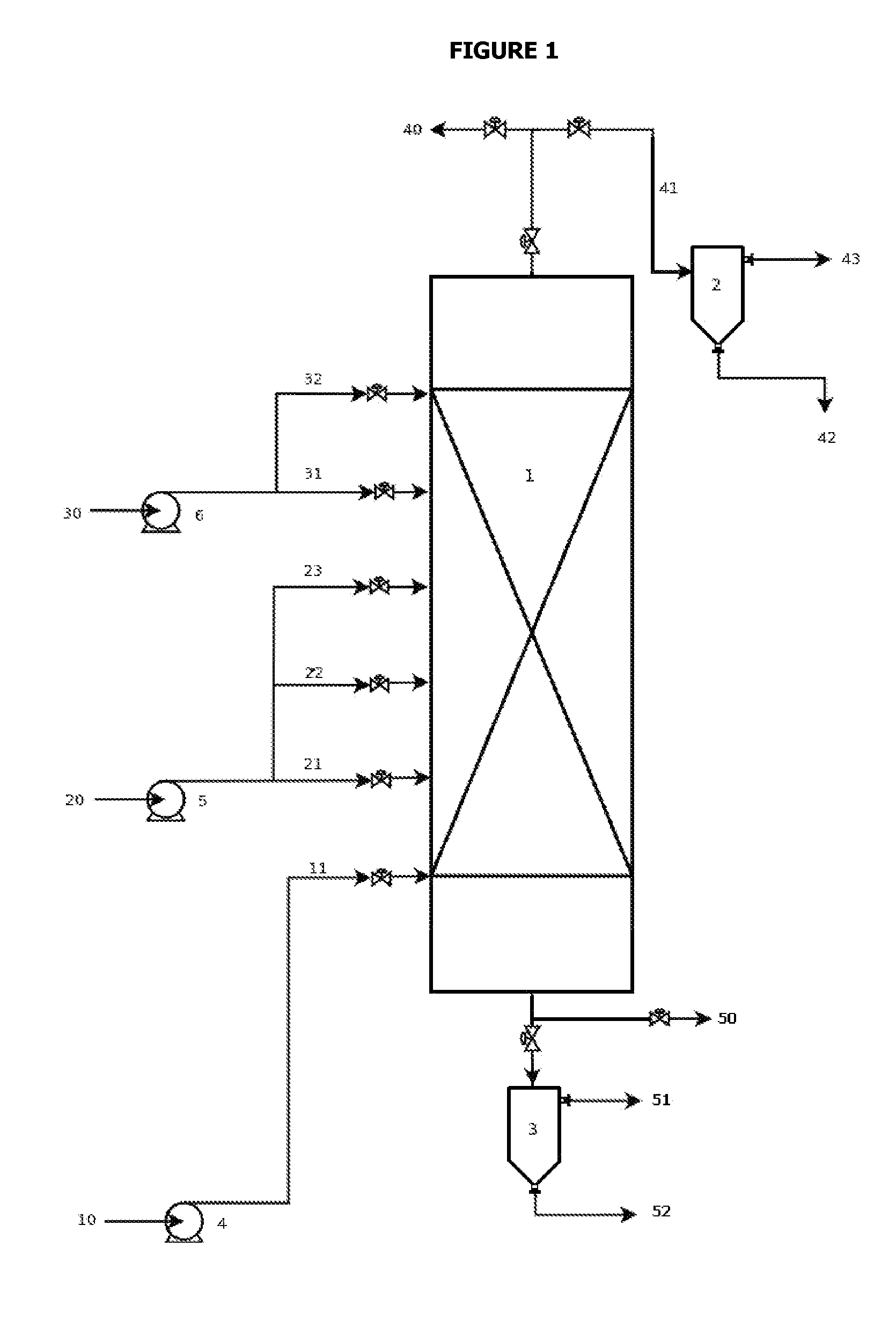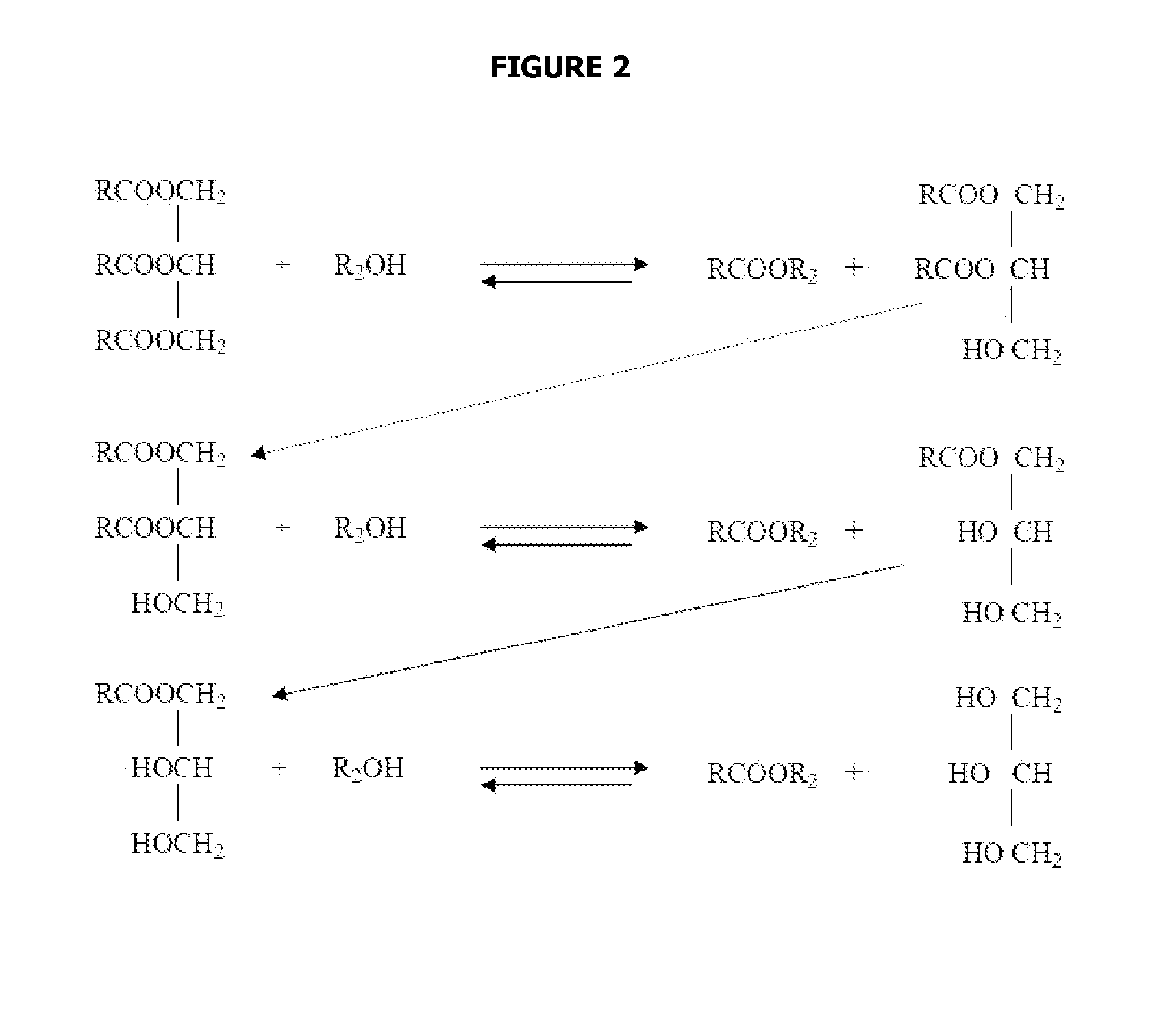Reaction system for producing fatty alkyl esters using a liquid-film reactor operated countercurrentwise
a technology of reaction system and fatty acid alkyl esters, which is applied in the direction of liquid chemical process, liquid gas reaction of thin film type, gas-gas reaction process, etc., can solve the problems of reducing productivity, reducing profit margin, and complicated separation
- Summary
- Abstract
- Description
- Claims
- Application Information
AI Technical Summary
Benefits of technology
Problems solved by technology
Method used
Image
Examples
Embodiment Construction
[0038]Table 1 shows the conditions of some of the palm oil methanolysis processes that were carried out in a bench-scale liquid film reactor that operated counter-current with a maximum capacity of 5 kg / h of oil. All of the reactions took place at 60° C. using sodium hydroxide as a catalyst at a concentration of 1% w / w with respect to the feeding flow of palm oil. The profile of methyl esters, monoglycerides, diglycerides, triglycerides, and methanol was determined for each of the reactions.
TABLE 1Experimental conditions of examples of the palm oil methanolysis processthat was used for this patent.Methanol toMethanolPalm oil flowpalm oil molarfeeding pointReaction(g min−1)ratio(% V)a1CC32.85.847.72CC49.75.567.13CC32.95.738.0aPercentage of the total reactor volume measured from the top of the reactor.
[0039]FIGS. 3 through 5 show the concentration profiles that were obtained experimentally and those that were calculated using a model that was developed, fitted, and experimentally and ...
PUM
| Property | Measurement | Unit |
|---|---|---|
| Temperature | aaaaa | aaaaa |
| Temperature | aaaaa | aaaaa |
| Fraction | aaaaa | aaaaa |
Abstract
Description
Claims
Application Information
 Login to view more
Login to view more - R&D Engineer
- R&D Manager
- IP Professional
- Industry Leading Data Capabilities
- Powerful AI technology
- Patent DNA Extraction
Browse by: Latest US Patents, China's latest patents, Technical Efficacy Thesaurus, Application Domain, Technology Topic.
© 2024 PatSnap. All rights reserved.Legal|Privacy policy|Modern Slavery Act Transparency Statement|Sitemap



